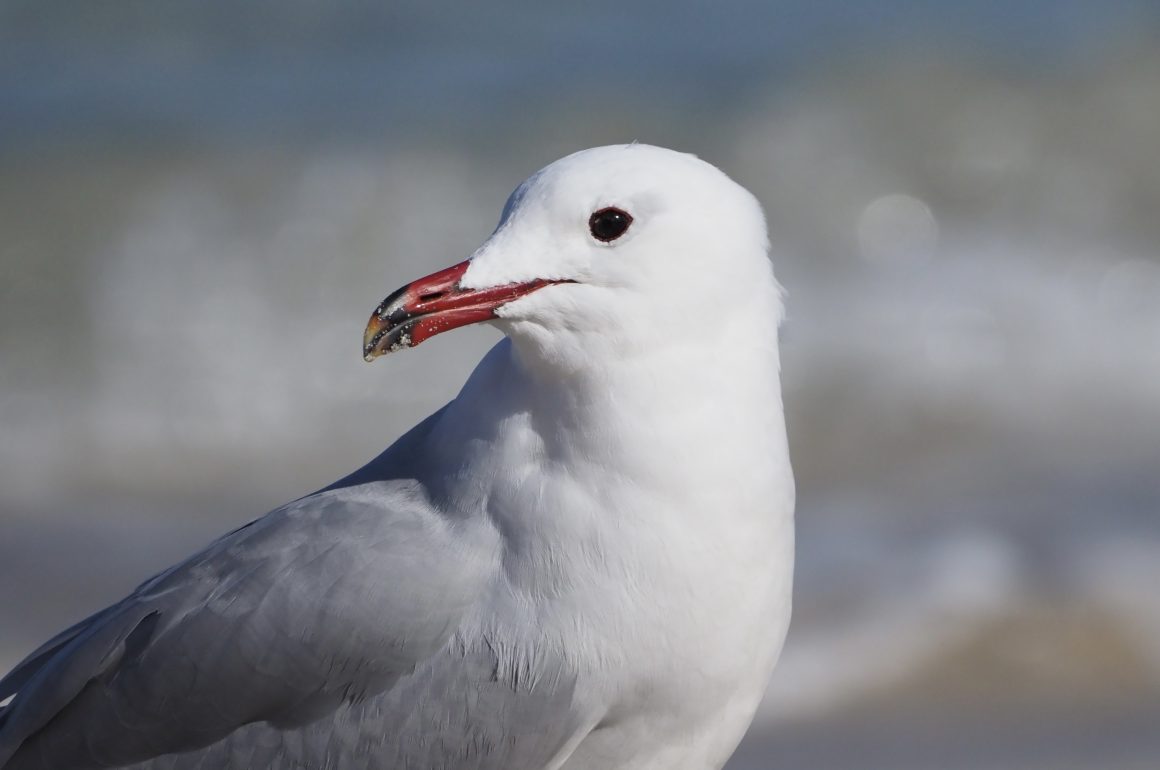
Mallorca not only has the largest wetlands in the Balearic Islands (see my last week’s post), it also has the highest mountains. The Sierra de Tramuntana stretch south-west/north-east across the top of the of the island, reaching in places over 1400m (4500ft). These rugged mountains not only feature spectacular scenery, they also offer great birdwatching, with a variety of raptors that are easy to see.
Eurasian Black Vultures have long been (literally) the biggest draw for birdwatchers. These resident vultures have, in the not-too-distant past, come perilously close to extinction, but thanks to protection and a more enlightened attitude, numbers have recovered. Today there are over 200 on the island, with around 40 breeding pairs. Black Vultures are big, with a wingspan of around 9ft; they are also one of the world’s heaviest flying birds, weighing up to 12.5kg (27lb). The Majorcan colony is unique as it is the only one found on an island.
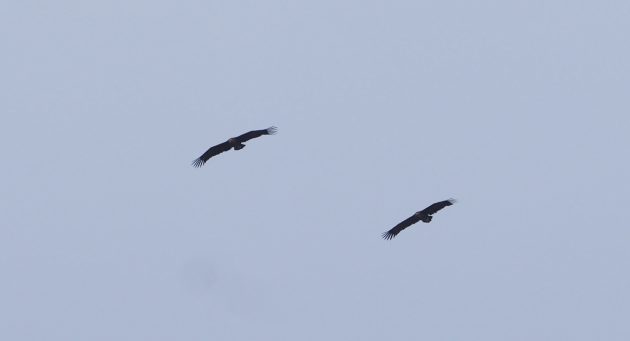
Black Vultures – the drooping hands are distinctive
They are easy to see: I saw them every time I visited the Sierras, though my closest and best views were when I was driving at places where I was unable to stop – Mallorcan mountain roads are narrow and winding, and have few roadside parking places. Apart from their size, they are easy birds to identify, as they soar on flattish wings, with their prominent hands (primaries) typically drooping. Until recently there was no confusion species on the island, but today there is also a population of Griffon Vultures. There hadn’t been any Griffon when I last visited Mallorca, so I turned to the Vulture Conservation Foundation to find out how they got there.
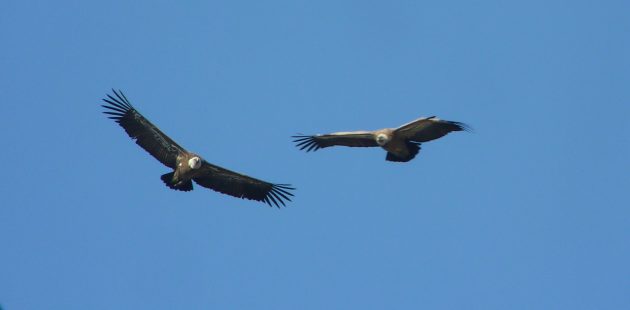
Griffon Vultures have been breeding on Mallorca since 2012
According to the VCF’s website, “In 2008, strong westerly winds carried over a hundred individuals from mainland Spain and rather than leaving, they stayed and colonised Mallorca. Most of them were juveniles and, began to breed after reaching their sexual maturity. In the spring of 2012, the first chicks were born in the Serra de Tramuntana, solidifying the establishment of the species in Mallorca and expanding its range. Scientific researchers and conservationists have monitored the new species ever since, and it seems to have adapted quite well to the Balearic habitat.”
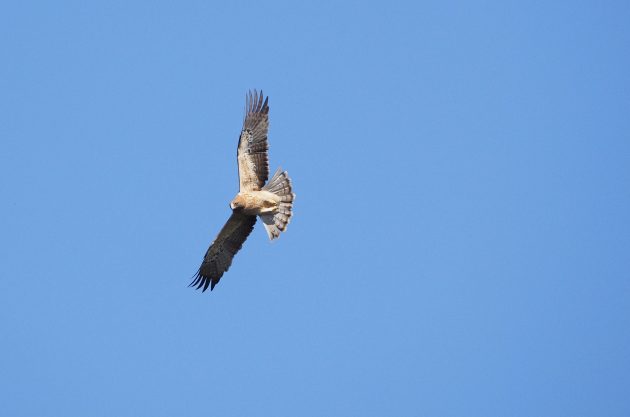
Booted Eagles are resident on the island
I had no problems seeing Griffon Vultures, either. One of the most reliable sites to find both species of vultures, along with other birds of prey, is around the Cuber reservoir. This is a typical artificial mountain lake, and apart from a few Cormorants and Yellow-legged gulls, held no birds of interest during my visit. However, the surrounding mountains are a reliable site for seeing raptors throughout the year, and during my walk there I saw both Black and Griffon Vultures, Red Kites, Booted Eagles and a single Peregrine Falcon (of the local race brookei, which is smaller and darker than the birds we see in northern Europe).
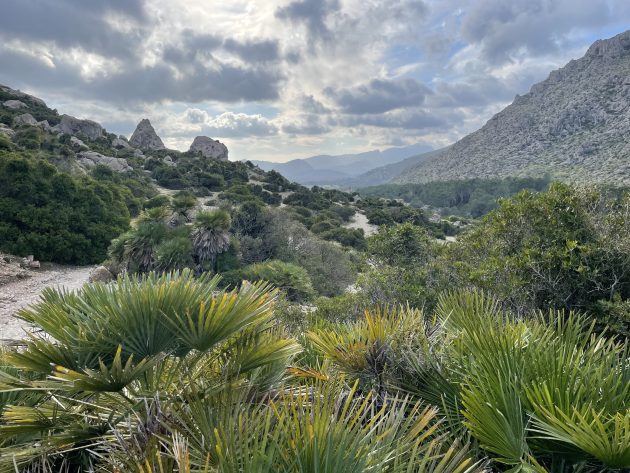
Fine scenery in the Boquer Valley, but few birds in February
One of the classic birding walks on Mallorca is the Boquer Valley, close to Peurto Pollença, and here I also saw Black Vultures. I walked the valley twice, hoping to see the endemic Balearic Warbler. I failed, forcing me to conclude that these warblers (only recently split from the very similar Mamora’s Warbler) are very tricky to find in winter, when they are not singing. In fact the Boquer Valley proved disappointing and relatively birdless, though I’ve not doubt that in spring, when it’s full of migrants, it’s terrific.
Though I may have missed the Balearic Warbler, I had no such problems with the Balearic Shearwater, seeing flocks of 40 or 50 birds feeding in the Bay of Alcúdia, though none came close enough to shore for me to photograph them. They are entertaining birds to watch, flying at speed low over the water, then suddenly diving into the water with an impressive splash, without apparently slowing at all.
I may not have photographed the shearwaters, but I had no such problem with another of Mallorca’s seabirds, Audouin’s gull. Named after Jean Victoire Audouin, a French naturalist, they could be renamed Picnic Gull, as they spend their days patrolling beaches in search of food, and if they see anyone sitting on the beach, they fly in to investigate. Audouin’s are really rather handsome gulls, with their dove-grey backs and smart red beaks. You never see flocks of them, as they usually hang around in pairs. However, if there’s a hint of free food, any nearby birds will come to investigate: I had five swooping around me when I shared some stale bread with them.
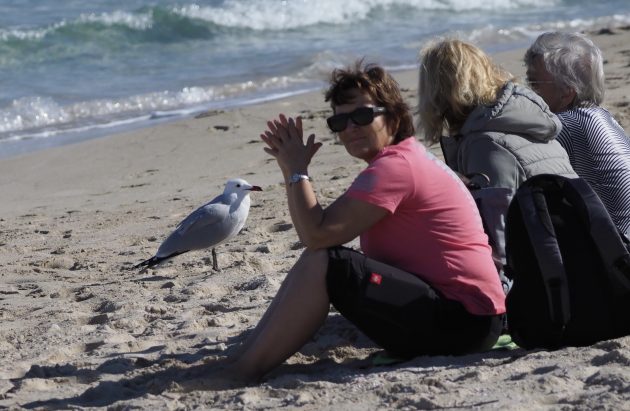
Audouin’s Gull waiting hopefully for food
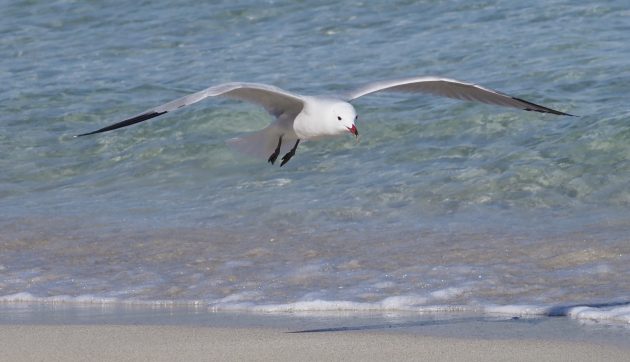
An Audouin’s Gull patrolling the beach
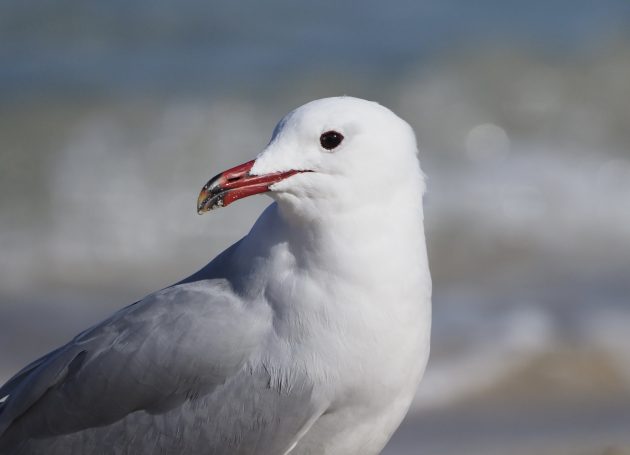
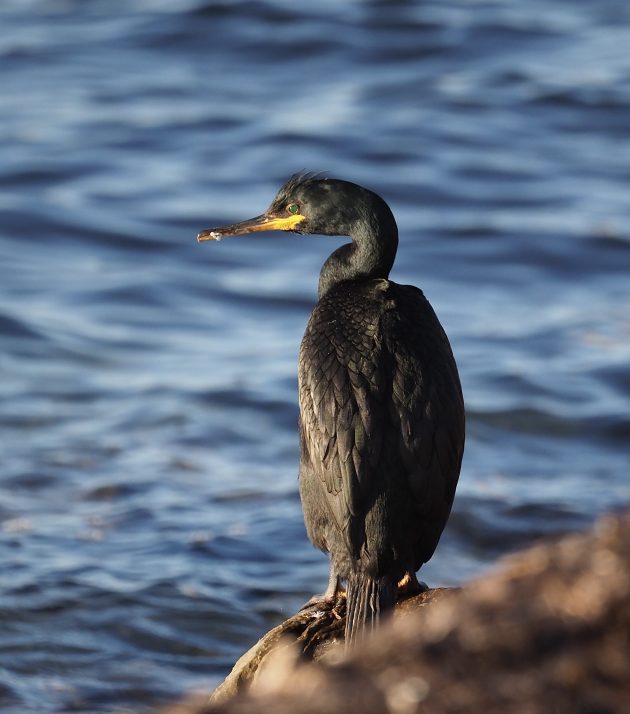
A Shag of the Mediterranean race, desmarestii
Shags of the Mediterranean race desmarestii are common on the coast. They are used to people, so aren’t in the least bit shy, and often allow a close approach. Several individuals that I saw were acquiring their full breeding plumage with distinctive crest, but this is a feature that’s soon lost. Mediterranean shags have paler, more yellowish beaks than their Atlantic cousins, while the first-year birds are usually much whiter.
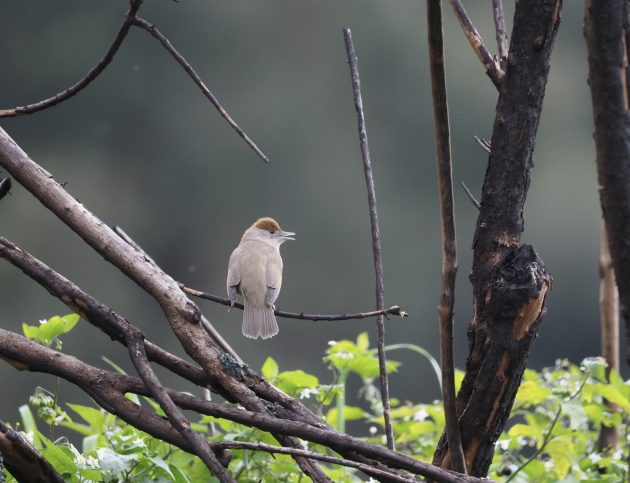
Blackcaps are common wintering birds. This is a brown-capped female
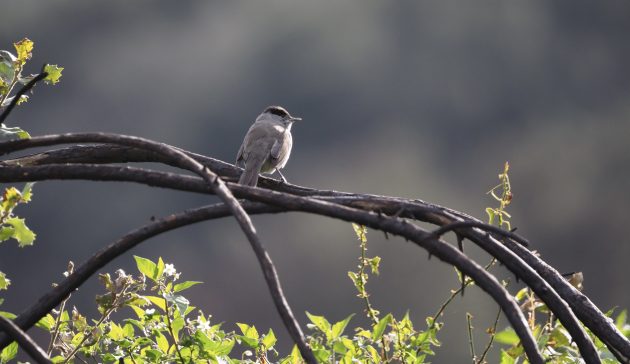
Male Blackcap
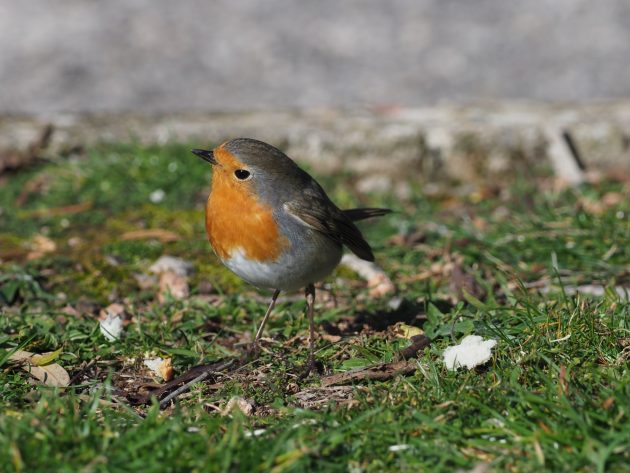
Robins are abundant winter visitors to Mallorca
Moving inland, I was reminded that Mallorca is an important wintering ground for several passerines from Northern Europe. Robins were everywhere, though they don’t breed on the island. Blackcaps do breed, but I suspect that many of the birds I saw were over-wintering individuals. Chiffchaffs are also common wintering birds, though not as numerous as I was expecting to find.
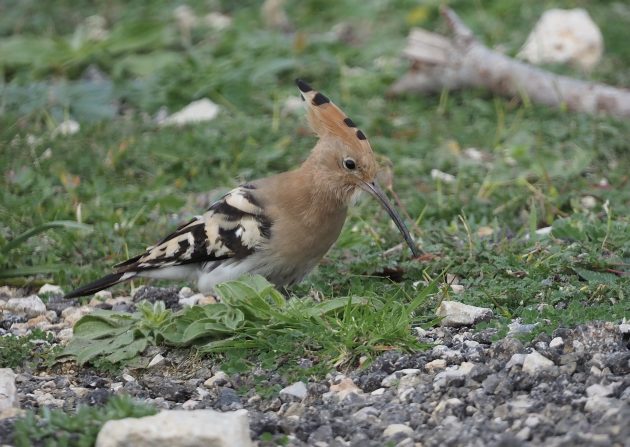
Though migrants to much of Spain, Hoopoes winter on Mallorca
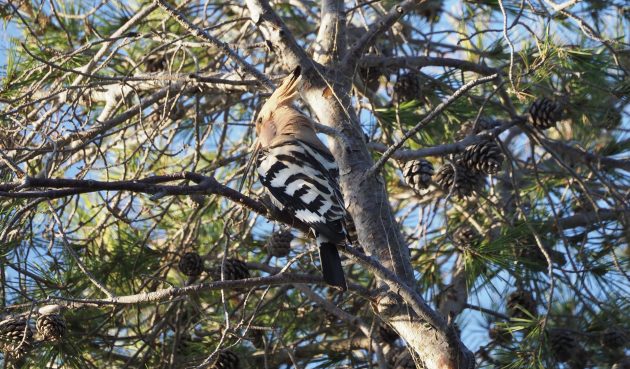
Singing Hoopoe. The bird’s name in onomatopoeic: it is named after its song
From what I have read, it seems that Hoopoes have become much more frequent in winter that was once the case: I found them common, while the males had already started singing their far-carrying song that gives these attractive birds their name. Wrynecks are another species that overwinters in Mallorca. The only individuals I encountered (where they were already singing) was at la Finca Pública de Son Real, a 395ha farm with public access. The Finca is a delightful place to walk, and here I also saw Crossbills. Mallorca crossbills are of the race balearica, and are noticeably smaller and duller then birds on the mainland.
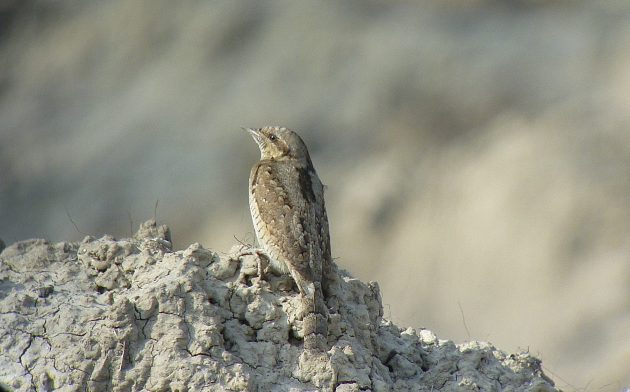
Wrynecks winter on the island
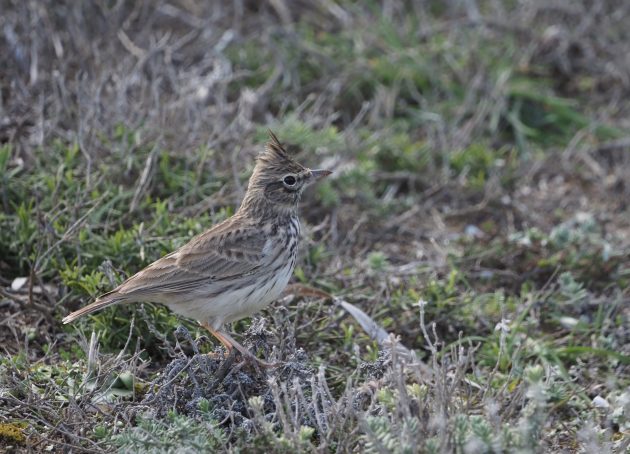
Thekla’s lark. There is no confusion with the very similar Crested Lark, as only Thekla’s occur in the Balearic Islands
The final tally for my trip was a modest 75 species, reflecting the fact that it wasn’t a purely birding holiday. However, I saw nearly all the birds I was expecting to find, with the notable exception of the Balearic Warbler. Perhaps one day I will go back to try and find it…
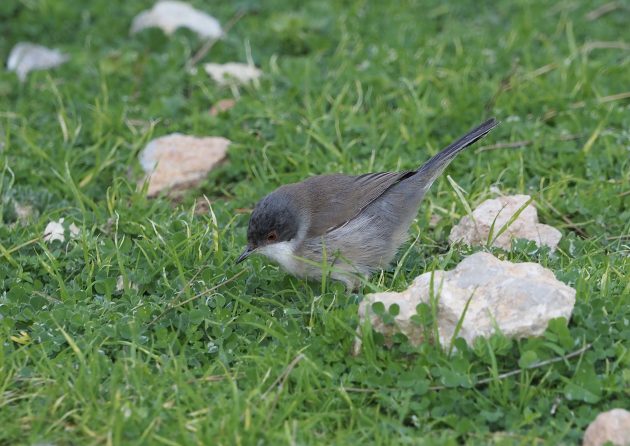
Sardinian Warblers are common and widespread, but more often heard than seen





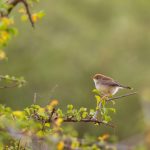
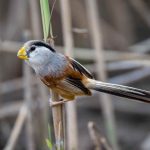
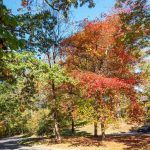
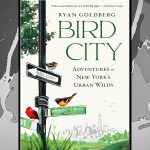
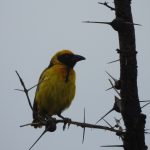

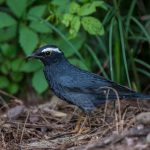
As a typical slightly arrogant tourist thinking of himself as being slightly unconventional, I never considered going to Mallorca before, as it seemed far too associated with mass tourism and vomiting on beaches and in pubs. The vultures you showed in your post make me reconsider this attitude.
Mallorca was my first foreign birding trip. We drove up to the mountains and looking out of the side of the coach as we drove up the twisting narrow roads with a steep drop into a gorge, we saw a small group of resting Black Vultures eying passing traffic with a slightly hopeful expression. As an introduction to vultures it was slightly disturbing.